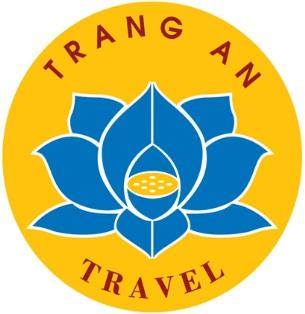Thien Mu pagoda

Built in 1601 between a river and a pine forest, the Thien Mu Pagoda ("Heavenly Lady Pagoda") in Hue is one of the oldest and prettiest religious buildings in the country. Among the many interesting artifacts housed at the complex is the car that took the monk Thich Quang Duc to his self-immolation in 1963 Saigon.
History
The Thien Mu Pagoda has its roots in a local legend: an old woman once appeared on the hill and said that a Lord would come and build a Buddhist pagoda for the country's prosperity. Hearing of this, Lord Nguyen Hoang ordered the construction of the pagoda of the "Heavenly Lady" (Thien Mu).
Construction began in 1601 under Lord Nguyen Hoang, and it was renovated by Lord Nguyen Phuc Tan in 1665. Lord Nguyen Phuc Chu contributed a great bell in 1710 and and a stele erected on the back of a marble tortoise in 1715. The Phuoc Dien Tower in front was added in 1864 by Emperor Thieu Tri.
The pagoda was heavily damaged in 1943, but was then fully renovated for over 30 years thereafter.
What to See
Thien Mu Pagoda is situated on Ha Khe hill, on the north bank of the Perfume River a few miles southwest of central Hue. The temple complex stretches north from the river banks in seven successive tiers, each of which is dedicated to a human form taken by the Buddha or a step to enlightenment (depending on whom you ask).
The octagonal Phuoc Dien Tower (1864) in the front of the complex rises 2m meters high in seven levels. Dai Hung shrine, the main-hall, presents a magnificent architecture. Near the entrance gate are 12 huge wooden sculptures of fearsome temple guardians, with real facial hair. The great bell (2.5m high, 3,285kg) from 1710 and tortoise with inscribed stele (2.58 m high) from 1715 are housed in the main building.
A complex of monastic buildings lies in the center, where the monks are usually involved in their daily routines of cooking, stacking wood, and whacking weeds. Novices might also be seen practicing their calligraphy.
A building near the rear of the complex houses a national relic: the car in which the monk Thich Quang Duc rode from his temple to Saigon on June 11, 1963. He stepped out of the car in an intersection, sat down in the lotus position, and burned himself to death in protest against the regime's violations of religious freedom.
At the far north end of the complex is a large cemetery at the base of the Truong Son mountains and a well-kept garden of pine trees.
The Thien Mu Pagoda has its roots in a local legend: an old woman once appeared on the hill and said that a Lord would come and build a Buddhist pagoda for the country's prosperity. Hearing of this, Lord Nguyen Hoang ordered the construction of the pagoda of the "Heavenly Lady" (Thien Mu).
Construction began in 1601 under Lord Nguyen Hoang, and it was renovated by Lord Nguyen Phuc Tan in 1665. Lord Nguyen Phuc Chu contributed a great bell in 1710 and and a stele erected on the back of a marble tortoise in 1715. The Phuoc Dien Tower in front was added in 1864 by Emperor Thieu Tri.
The pagoda was heavily damaged in 1943, but was then fully renovated for over 30 years thereafter.
What to See
Thien Mu Pagoda is situated on Ha Khe hill, on the north bank of the Perfume River a few miles southwest of central Hue. The temple complex stretches north from the river banks in seven successive tiers, each of which is dedicated to a human form taken by the Buddha or a step to enlightenment (depending on whom you ask).
The octagonal Phuoc Dien Tower (1864) in the front of the complex rises 2m meters high in seven levels. Dai Hung shrine, the main-hall, presents a magnificent architecture. Near the entrance gate are 12 huge wooden sculptures of fearsome temple guardians, with real facial hair. The great bell (2.5m high, 3,285kg) from 1710 and tortoise with inscribed stele (2.58 m high) from 1715 are housed in the main building.
A complex of monastic buildings lies in the center, where the monks are usually involved in their daily routines of cooking, stacking wood, and whacking weeds. Novices might also be seen practicing their calligraphy.
A building near the rear of the complex houses a national relic: the car in which the monk Thich Quang Duc rode from his temple to Saigon on June 11, 1963. He stepped out of the car in an intersection, sat down in the lotus position, and burned himself to death in protest against the regime's violations of religious freedom.
At the far north end of the complex is a large cemetery at the base of the Truong Son mountains and a well-kept garden of pine trees.
Tin tức liên quan
- Vietnamese second most confident in Asia-Pacific about post-pandemic travel: survey (24/6/2022)
- Kayaking in Việt Nam’s most beautiful places (24/04/2021)
- Da Nang tops Google list of 10 trending destinations for 2020
- Explore Vân Long Wetland Nature Reserve in Ninh Bình
- Hà Nội Train Street among Top 8 over-touristed sites (03/12/2019)
- VNAT hosts famtrip to explore sea and island tourism products in Quang Nam and Quang Ngai
- Travel Daily News lists amazing ways to see Viet Nam (21/06/2019)
- Ha Noi serves nearly 14.4 million visitors so far (21/06/2019)
- CNN praises Hoi An as one of the most beautiful towns in Southeast Asia (19/06/2019)
- Quang Ninh has additional sea and island tourism site (14/06/2019)
Tìm kiếm
Tour
Hotel
Keyword
Location
Location
Star
Type







